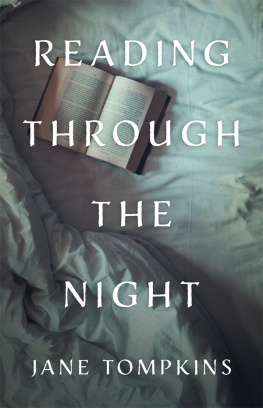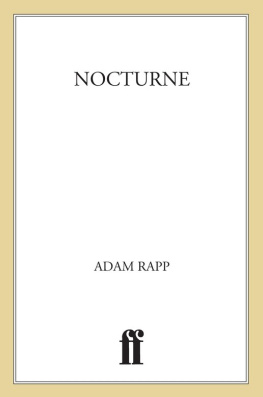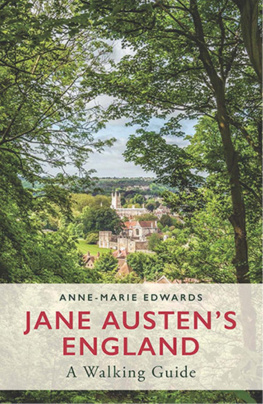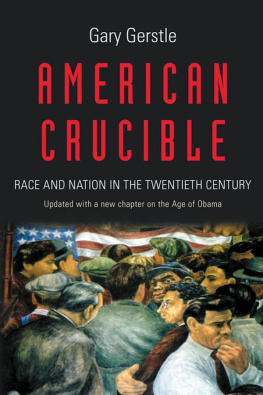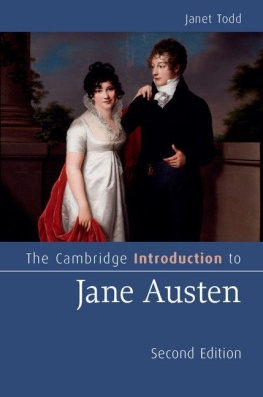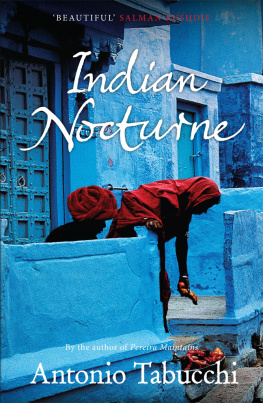Todd Jane Marie - Nocturne: Night in American Art, 1890-1917
Here you can read online Todd Jane Marie - Nocturne: Night in American Art, 1890-1917 full text of the book (entire story) in english for free. Download pdf and epub, get meaning, cover and reviews about this ebook. City: USA, year: 2018;2015, publisher: Yale University Press, genre: Detective and thriller. Description of the work, (preface) as well as reviews are available. Best literature library LitArk.com created for fans of good reading and offers a wide selection of genres:
Romance novel
Science fiction
Adventure
Detective
Science
History
Home and family
Prose
Art
Politics
Computer
Non-fiction
Religion
Business
Children
Humor
Choose a favorite category and find really read worthwhile books. Enjoy immersion in the world of imagination, feel the emotions of the characters or learn something new for yourself, make an fascinating discovery.

- Book:Nocturne: Night in American Art, 1890-1917
- Author:
- Publisher:Yale University Press
- Genre:
- Year:2018;2015
- City:USA
- Rating:5 / 5
- Favourites:Add to favourites
- Your mark:
- 100
- 1
- 2
- 3
- 4
- 5
Nocturne: Night in American Art, 1890-1917: summary, description and annotation
We offer to read an annotation, description, summary or preface (depends on what the author of the book "Nocturne: Night in American Art, 1890-1917" wrote himself). If you haven't found the necessary information about the book — write in the comments, we will try to find it.
Nocturne: Night in American Art, 1890-1917 — read online for free the complete book (whole text) full work
Below is the text of the book, divided by pages. System saving the place of the last page read, allows you to conveniently read the book "Nocturne: Night in American Art, 1890-1917" online for free, without having to search again every time where you left off. Put a bookmark, and you can go to the page where you finished reading at any time.
Font size:
Interval:
Bookmark:
Nocturne
Night in American Art, 18901917
Hlne Valance
Translated by Jane Marie Todd

This publication has been made possible through support from the Terra Foundation for American Art.

English translation copyright 2018 by Yale University. Originally published as Nuits amricaines: lart du nocturne aux tats-Unis, 18901917. Copyright 2015 Presses de luniversit Paris-Sorbonne.
All rights reserved.
This book may not be reproduced, in whole or in part, including illustrations, in any form (beyond that copying permitted by Sections 107 and 108 of the U.S. Copyright Law and except by reviewers for the public press), without written permission from the publishers.
yalebooks.com/art
Designed by Leslie Fitch and Julie Allred
Set in Crimson and Source Sans Pro type by BW&A Books, Inc.
Printed in China by Regent Publishing Services Limited
Library of Congress Control Number: 2017961776
ISBN 978-0-300-22399-6
eISBN 978-0-300-22414-6
A catalogue record for this book is available from the British Library.
This paper meets the requirements of ANSI/NISO Z39.48-1992 (Permanence of Paper).
10 9 8 7 6 5 4 3 2 1
Jacket illustrations: (front) Childe Hassam, Nocturne, Railway Crossing, Chicago, 1893 (, destail).
Frontispiece: Alvin Langdon Coburn, Fifth Avenue from the St. Regis, c. 1905 ().
For Elisabeth
PART I
Antivisions
The Redefinition of Vision by Science and Technology
PART II
Heart of Darkness
The Nocturne as Metaphor for Racial Difference
PART III
Landscape Reconfigured
Urban Nocturnes
Writing this book has been far from a solitary venture, and over the long course of its maturation I have received the help of many more people than I would be able to list here. I am grateful, first, to Franois Brunet and Michael Leja for their solid and constant support from the very first months of my doctoral research.
I have been time and again surprised by the generosity of American art scholars; from eminent professors to young scholars, many have taken the time to read and offer insightful criticisms on various stages of this manuscript. I owe much to Cynthia Mills and Bill Truettner, with whom I broached the topic of nocturne paintings more than ten years ago. I enjoyed discussing night and artificial lighting with Hollis Clayson, Sandy Isenstadt, and William Sharpe, and I hope to continue our conversations beyond this book. Sarah Burns, Martin Berger, Alan Braddock, and Alexander Nemerov provided great suggestions, as did my co-fellows at the Smithsonian American Art Museum: Anna Aranbindan-Kesson, Lacey Baradel, Sarah Beetham, Maggie Cao, Liam Considine, Seth Feman, Mazie Harris, Sara Levavy, Emily Liebert, Erin Pauwels, Alex Taylor, and Tatsiana Zhurauliova. Our weekly writing workshops remain among the most exciting and satisfying intellectual exchanges I ever experienced. The Terra Foundation for American Art summer residency in Giverny was the occasion of lively discussions with a community of young colleagues, among whom I particularly thank Ellery Foutch and Alison J. Carr for their astute reading of important passages of this book. I am tremendously thankful for Sophie Crass admirable way of being at once so kind and so smart in her suggestions on vast parts of the manuscript.
I was impressed by the availability and warmth of the many museum curators I met during my research, and I am grateful for the conversations I had with Nancy Anderson at the National Gallery of Art in Washington, Anna Marley at the Pennsylvania Academy for the Fine Arts, Kathleen Foster at the Philadelphia Museum of Art, Joyce Schiller at the Delaware Art Museum, Kenneth Myers at the Detroit Institute of Art, Scott Shields at the Crocker Art Museum, and Harvey Jones at the Oakland Museum of California. The Terra Foundation for American Art has provided several generous grants and fellowships which, rather than simply make my research possible, turned it into an exceptionally comfortable venture. Above all, though, I am grateful to Veerle Thielemans, Francesca Rose, and Ewa Bobrowska at the Terra Foundations offices in Paris. They have always offered helpful and benevolent advice as they watched this project grow through the years.
I feel very lucky for the friends I have made in the American art community, but I am just as thankful for the support of friends and family for whom this project could appear a bit exotic. I owe special thanks to my parents for patiently letting me wander so far away from them, and to Rmi Gauthier, who has followed me long enough to become an American art connoisseur malgr lui.
In 1890 a short comic piece appeared in Pucks Library under the title A Chapter in Art, in which the paintings stored away in a houses attic begin to talk. The main speaker in this exchange, a view of Mount Popocatpetl erupting, traces its career from fame to oblivion:
When I first appeared in public, twenty-five years ago, I was the Artistic Success of the day. I am the work of an artist famous at that time. You may never have heard of him, for I believe he is now in the pork business in Cincinnatibut he was famous then. I was too good to be exhibited in the National Academy. I had a printed shrine in the innermost gallery of a great Art-Dealer. The critics came and bowed before me. They admired my glowing lava, the sunrise on my distant hills, my sparkling blue and white snow, my deep green forests and my bright blue sky. Here, they said, is American Art at one bound equaling and surpassing the Art of Europe. Here is the color of Titian, the touch of Rembrandt the grandeur of somebody else and the power of I dont know whom. A gentleman bought me. He had made a million in oil, and he paid seven thousand for me. He took me home to his magnificent mansion. He was just starting a picture-gallery, and he hung me there, under a magnificent catafalque of red cloth. People came and viewed me by special invitation. I was happy.
But, alas, he went to Europe, and came back with a Schreyer, a Horace Vernet, a Kaulbach and an Achenbach. The moment I saw that Achenbach, I knew I was gone. He was two inches larger than me, all round. I came out of the catafalquehe went in. The next year a washy-gray Corot drove me out of the front parlor. I went into the dining-room, and was dislodged by a measly little black Rousseau. I went upstairs, and the march of art drove me from one bedroom to anotherfrom the second story to third, from third to fourth.
As the children grew up, I was passed from one to another. At last the youngest sent me to the attic, to hang in my place a water-color Whistler, with a salmon gray silk panel behind him.
The fate of the Eruption, formerly acclaimed as the best in American art, is symptomatic of a radical change in American tastes in the late nineteenth century. The decline of the painting, supplanted for the most part by European works, seems to point to the end of a certain notion of landscape painting associated with the definition of a national art for the United States. The multi-colored, grandiose landscape of Popocatpetl brings to mind the favorite motifs of the leading American school of painting, the Hudson River School, which in the 1830s gave the United States an artistic legitimacy through a form of landscape painting that treasured spectacular views of majestic mountains, magnificent canyons, and verdant valleys illuminated by the setting sun. In celebrating the American continents wilderness, artists of the Hudson River School contributed to the nationalist and imperialist discourse of their time: they supported the idea of Manifest Destiny, the belief that divine Providence would bestow Americas extraordinary natural resources on the European settlers, so that they might found a new civilization on the continent.
Next pageFont size:
Interval:
Bookmark:
Similar books «Nocturne: Night in American Art, 1890-1917»
Look at similar books to Nocturne: Night in American Art, 1890-1917. We have selected literature similar in name and meaning in the hope of providing readers with more options to find new, interesting, not yet read works.
Discussion, reviews of the book Nocturne: Night in American Art, 1890-1917 and just readers' own opinions. Leave your comments, write what you think about the work, its meaning or the main characters. Specify what exactly you liked and what you didn't like, and why you think so.


